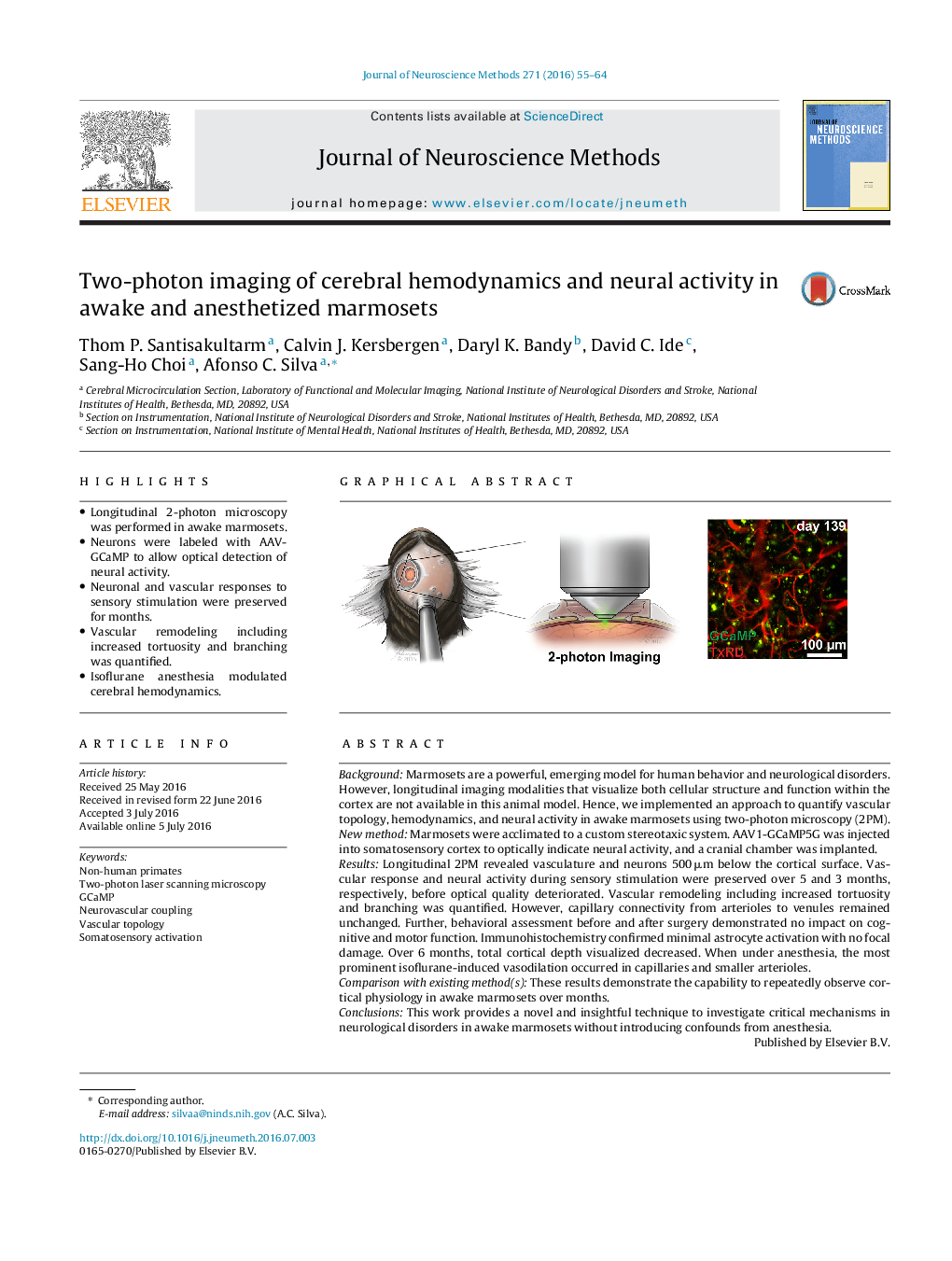| Article ID | Journal | Published Year | Pages | File Type |
|---|---|---|---|---|
| 6267682 | Journal of Neuroscience Methods | 2016 | 10 Pages |
â¢Longitudinal 2-photon microscopy was performed in awake marmosets.â¢Neurons were labeled with AAV-GCaMP to allow optical detection of neural activity.â¢Neuronal and vascular responses to sensory stimulation were preserved for months.â¢Vascular remodeling including increased tortuosity and branching was quantified.â¢Isoflurane anesthesia modulated cerebral hemodynamics.
BackgroundMarmosets are a powerful, emerging model for human behavior and neurological disorders. However, longitudinal imaging modalities that visualize both cellular structure and function within the cortex are not available in this animal model. Hence, we implemented an approach to quantify vascular topology, hemodynamics, and neural activity in awake marmosets using two-photon microscopy (2PM).New methodMarmosets were acclimated to a custom stereotaxic system. AAV1-GCaMP5G was injected into somatosensory cortex to optically indicate neural activity, and a cranial chamber was implanted.ResultsLongitudinal 2PM revealed vasculature and neurons 500 μm below the cortical surface. Vascular response and neural activity during sensory stimulation were preserved over 5 and 3 months, respectively, before optical quality deteriorated. Vascular remodeling including increased tortuosity and branching was quantified. However, capillary connectivity from arterioles to venules remained unchanged. Further, behavioral assessment before and after surgery demonstrated no impact on cognitive and motor function. Immunohistochemistry confirmed minimal astrocyte activation with no focal damage. Over 6 months, total cortical depth visualized decreased. When under anesthesia, the most prominent isoflurane-induced vasodilation occurred in capillaries and smaller arterioles.Comparison with existing method(s)These results demonstrate the capability to repeatedly observe cortical physiology in awake marmosets over months.ConclusionsThis work provides a novel and insightful technique to investigate critical mechanisms in neurological disorders in awake marmosets without introducing confounds from anesthesia.
Graphical abstractDownload high-res image (237KB)Download full-size image
